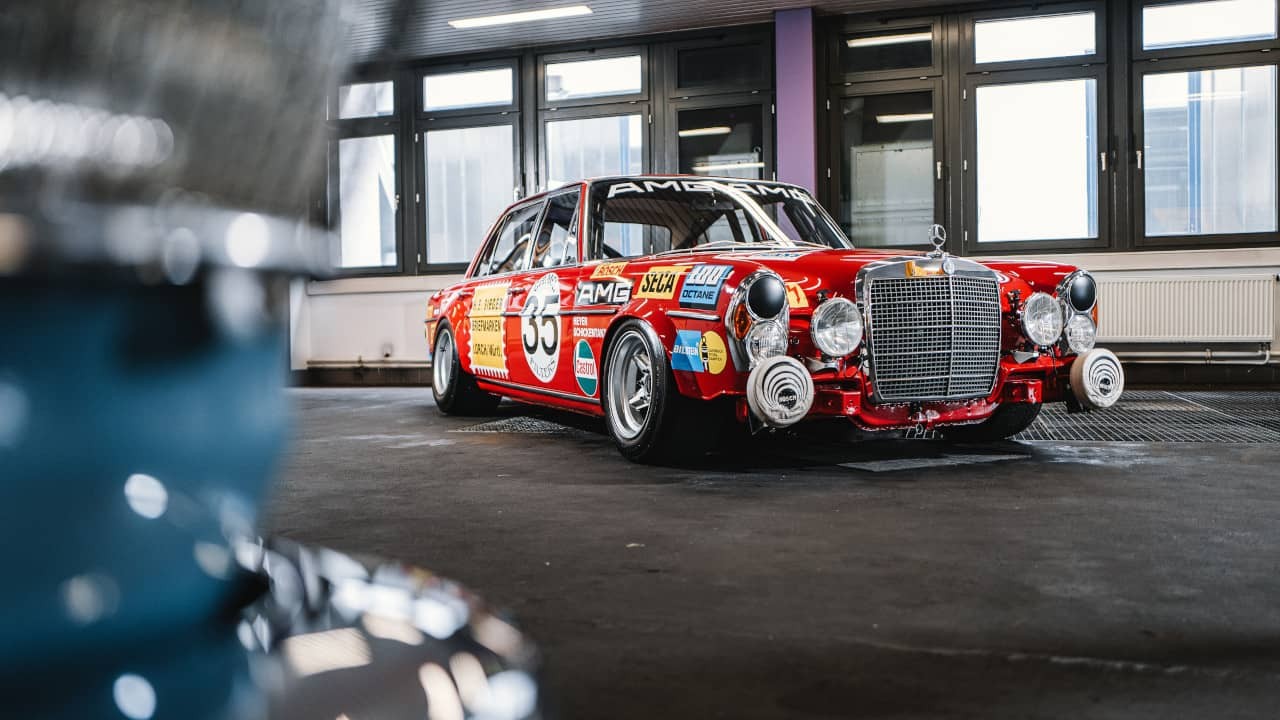Mercedes-AMG, often seen as simply Mercedes-AMG, is synonymous with high-performance vehicles within the Mercedes-Benz family. But what does the AMG in Mercedes actually mean? It stands for Aufrecht, Melcher, and Großaspach, representing the surnames of the founders and the town where the company’s first workshop was established. This badge signifies more than just a name; it embodies a legacy of racing pedigree and exceptional engineering.
Delving deeper, understanding what Mercedes-AMG signifies requires exploring its rich history and evolution into the powerhouse it is today. Let’s unpack the story behind these three letters and what they represent for car enthusiasts worldwide.
The History of AMG: From Racing Roots to Road Dominance
The Mercedes-AMG story began with passion and defiance. In 1967, Hans Werner Aufrecht and Erhard Melcher, former Daimler-Benz engineers with a shared love for motorsports, decided to forge their own path. After Daimler-Benz withdrew from racing, they continued privately refining the 300 SE racing engine. Based in Großaspach, Aufrecht’s birthplace, they laid the foundation for what would become AMG.
Their dedication quickly paid off. In 1965, an engine meticulously tuned by Aufrecht and Melcher powered a car to an impressive ten victories in the German Touring Car Championship. This early success cemented their reputation for performance enhancement. While track victories were crucial, Aufrecht envisioned bringing this motorsport DNA to the road. AMG began modifying standard Mercedes-Benz cars, injecting them with racing spirit and creating high-performance road vehicles.
The relationship between AMG and Daimler-Benz evolved over decades. From informal collaborations in the late 1980s to an official racing partnership, their bond strengthened. Finally, in 1990, a formal cooperation contract was signed, marking a pivotal moment. Mercedes-AMG officially became part of the Daimler family, allowing them to unleash their performance expertise on a broader scale and bring AMG-engineered vehicles to a global audience.
Decoding Mercedes-AMG: What Does It Really Mean?
In today’s market, Mercedes-AMG signifies the pinnacle of performance within the Mercedes-Benz lineup. An AMG badge represents a vehicle meticulously engineered for exhilarating power, dynamic handling, and a driving experience that sets the pulse racing. AMG cars typically boast more powerful engines, often handcrafted, along with performance-tuned suspensions, braking systems, and distinctive styling.
However, to broaden accessibility and cater to diverse customer preferences, Mercedes-Benz introduced AMG Line and AMG Sport trims. These variants offer a taste of the AMG aesthetic and enhanced features without the full-blown performance upgrades of dedicated AMG models. AMG Line vehicles feature sporty styling cues, AMG wheels, and interior enhancements, while AMG Sport (now largely integrated into AMG Line or specific model designations) offered a step up in performance-oriented features.
Ultimately, when you see AMG on a Mercedes-Benz, it’s a mark of distinction. It represents a commitment to high performance, a legacy born on the racetrack, and a driving experience that is anything but ordinary. From its humble beginnings to its current status as a global performance icon, Mercedes-AMG continues to embody automotive excellence and driving passion.

